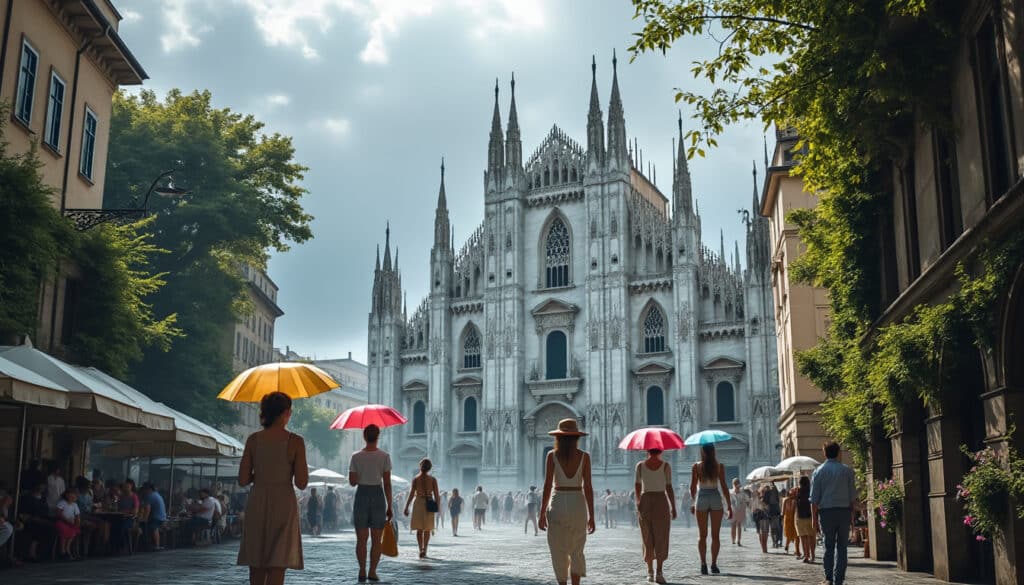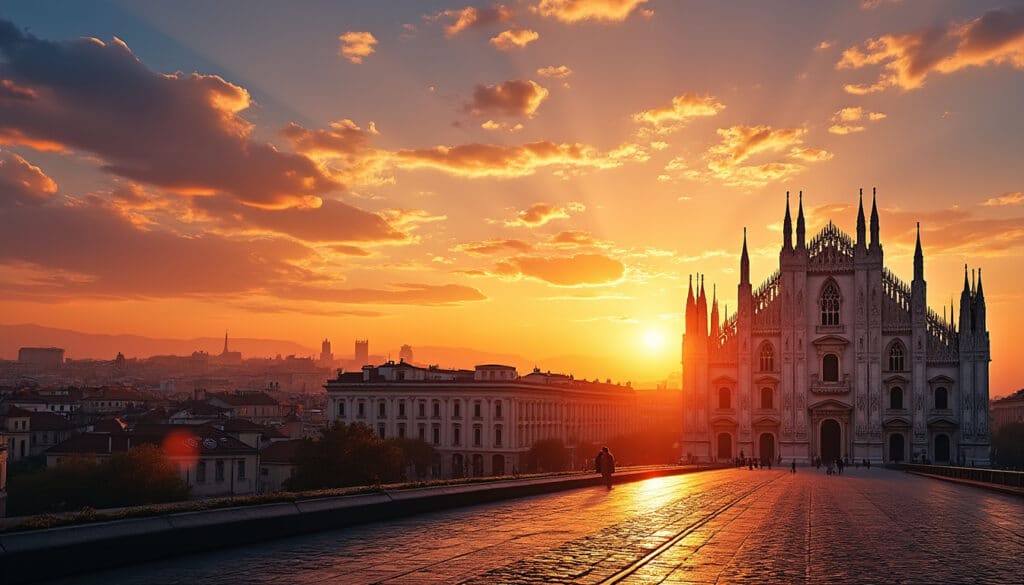Milan, a city synonymous with fashion and design, is also well-known for its diverse climate. Situated in the northern part of Italy, Milan experiences distinct weather patterns that can surprise visitors unaccustomed to its seasonal variations. While the city’s summer can be gloriously warm, reminiscent of the vibrant runway shows during Milan Fashion Week, the other seasons offer their unique charms. This article delves into the intricacies of Milan’s climate, exploring whether it truly remains warm throughout the year, and how this can impact both residents and visitors alike.
Understanding Milan’s Temperature Variability
Visitors to Milan often imagine a climate that is perpetually warm, given its reputation as one of the world’s fashion capitals. However, the reality is quite different. The city’s climate can be categorized under the Köppen climate classification as humid subtropical, with distinct seasons that showcase a wide array of temperatures.
The warmest month is July, with average maximum daytime temperatures reaching up to 31°C 🌞. This warmth is complemented by the glamour of fashion shows by iconic brands like Prada and Versace, embodying the city’s energetic summer spirit. However, Milan isn’t all about sunshine and high temperatures. January stands as the coldest month, featuring average maximum temperatures of around 9°C, offering a stark contrast from the summer months.
At night, the mercury can dip to as low as 1°C during the winter period, requiring visitors to pack layers and warm clothing to navigate the city’s historic streets comfortably. This temperature fluctuation is a testament to the city’s diverse climatic experience, where one can enjoy both the warmth of summer and the chill of winter.
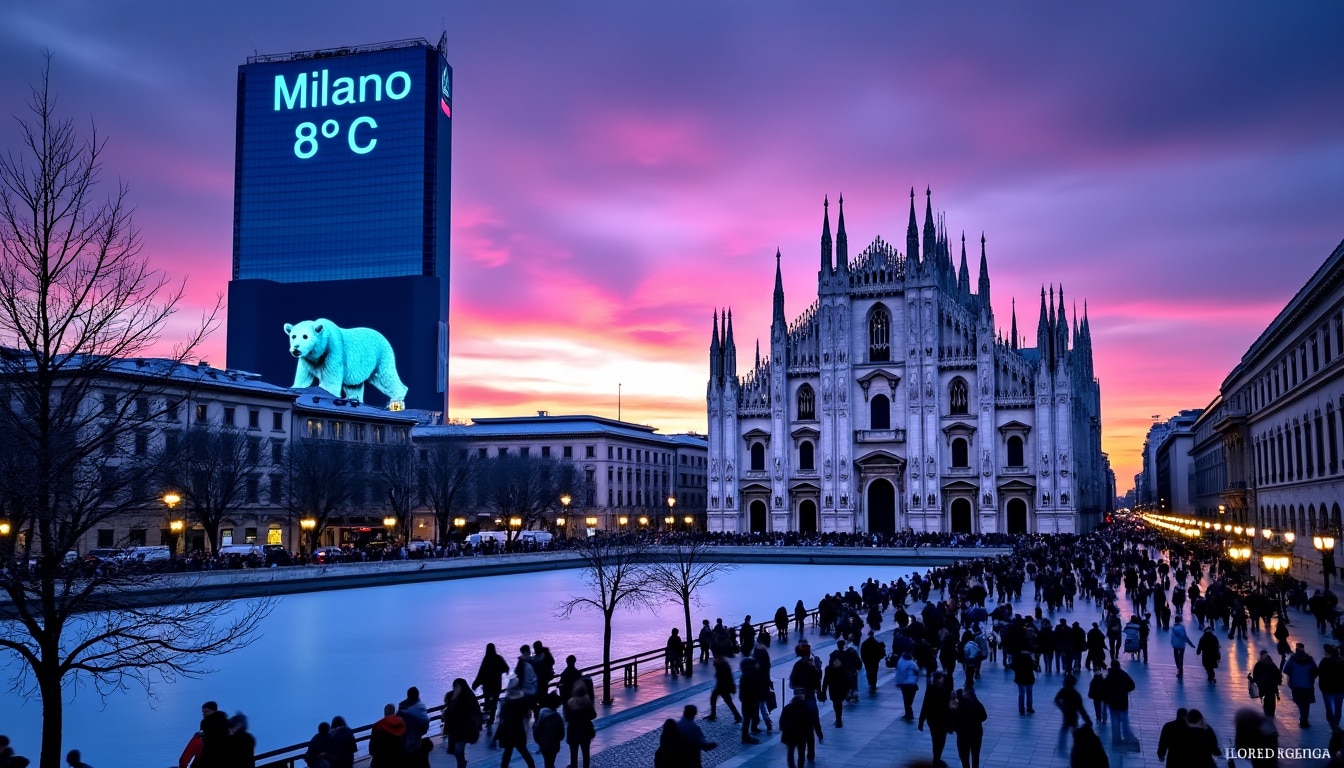
Monthly Temperature Overview in Milan
| Month 🌿 | Max Temperature 🌞 | Min Temperature 🌙 |
|---|---|---|
| January | 9°C | 1°C |
| July | 31°C | 19.3°C |
Seasonal Changes in Milan
Milan experiences significant seasonal changes that are both beautiful and challenging depending on the time of year. These changes are essential in understanding the city’s climate and planning visits accordingly.
Spring is a delightful time in Milan with temperatures gradually warming, making it ideal for outdoor activities as blossoms frame the elegant architecture. Events like the Milan Expo embrace this fresh atmosphere, drawing visitors globally.
During summer, the city truly comes alive, mirroring the vibrant creations showcased by designers like Dolce & Gabbana. The warm weather is perfect for both leisure and exploration, with cultural festivals frequenting the city’s schedule.
As autumn arrives, the spectacle of falling leaves adds a magical touch to Milan’s parks, such as Sempione Park. Designers like Giorgio Armani embrace this season’s colors, reflected in their collections seen on runways during Milan Fashion Week. However, this period also marks the return of more frequent rains.
Winter brings a different charm to Milan, characterized by its brisk air and festive decorations. Though not as snowy as one might expect, 🏔️ the chill is palpable, particularly in streets adorned with holiday lights, making it a cozy time to explore the city’s rich tapestry of culture and history.
Understanding these seasonal differences can make a trip to Milan greatly rewarding, with each time of year offering its own unique experience.
Precipitation and Rainfall Patterns
One crucial aspect that visitors often overlook when planning a trip to Milan is its precipitation patterns. Milan is notably wet, receiving an annual precipitation of approximately 1205 mm. This considerable rainfall contributes to the lush greenery that can be seen in many of the city’s parks and gardens.
November is the city’s wettest month, with rainfall averaging 146 mm spread over 14 rainy days. In contrast, January tends to be drier, receiving only 62 mm over 11 days. These wetter months can result in occasional flooding, especially during periods of intense rainfall, which is something visitors should be prepared for.
Monthly Rainfall Chart
| Month 🌧️ | Rainfall (mm) 💧 | Rainy Days ☔ |
|---|---|---|
| November | 146 mm | 14 |
| January | 62 mm | 11 |
Overall, Milan’s precipitation patterns reflect its humid climate, which is why waterproof attire and footwear are recommended for those exploring the city during its rainy seasons. For more detailed weather specifics, consider visiting Milan’s climate page.
Sunshine and Daylight in Milan
While Milan is known for its fashion, it’s also recognized for its fluctuating sunlight hours. The length of daylight has a profound impact on how locals and visitors experience the city.
In July, the brightest month, Milan enjoys around 284 hours of sunshine ☀️, which complements the vibrant outdoor activities and vivid city life. In contrast, January, the darkest month, is characterized by approximately 78 hours of sunshine, lending a cozy allure to indoor venues and cafes.
These variations in sunshine not only affect daily life, from bustling markets to serene evenings but also influence the design aesthetics seen in brands like Bulgari and Agnona, which often reflect seasonal brightness in their collections.
Daily Sunshine Hours
| Month 🌞 | Sunshine Hours ☀️ |
|---|---|
| July | 284 |
| January | 78 |
Thus, whether exploring Milan’s alfresco cafes during long summer days or savoring intimate dinners under winter lights, the city’s seasonal sunlight embraces its multifaceted charm. For further exploration of Milan’s sunlight patterns, visit this resource.
Humidity Levels and Comfort
Humidity plays a significant role in how warm or cold a temperature feels and can greatly influence comfort during travel. Milan’s humidity levels shift considerably across the seasons, affecting how temperatures are perceived. December records the highest humidity at 86%, which can amplify the cold, making the air feel even chillier than it is during winter.
Conversely, the summer month of July experiences lower humidity around 71%, yet combined with high temperatures, it can lead to a ‘feels-like’ temperature that is much hotter. This makes lightweight, breathable clothing essential for summertime visits to Milan, especially during events like the Milan Fashion Week where style meets comfort.
Understanding these nuances can help in better planning for a visit to Milan and ensuring the experience is as comfortable as it is stylish. To understand more about how humidity influences Milan’s climate, explore here.
Humidity Comparison by Month
| Month 🌤️ | Humidity % 💧 |
|---|---|
| December | 86% |
| March | 68% |
FAQ: Milan’s Weather Queries
- 🌡️ Does Milan get very cold? Yes, especially in January, where temperatures can drop to around 1°C at night.
- ☀️ What is the best time to visit Milan for sunshine? July typically offers the most sunshine hours, ideal for exploring the city outdoors.
- 🌧️ When is Milan’s rainy season? November is the wettest month, so plan with rain gear if visiting during this time.
For a comprehensive guide and updates on Milan’s annual climate, including snow predictions and temperature extremes, make sure to browse Milan’s weather portal.
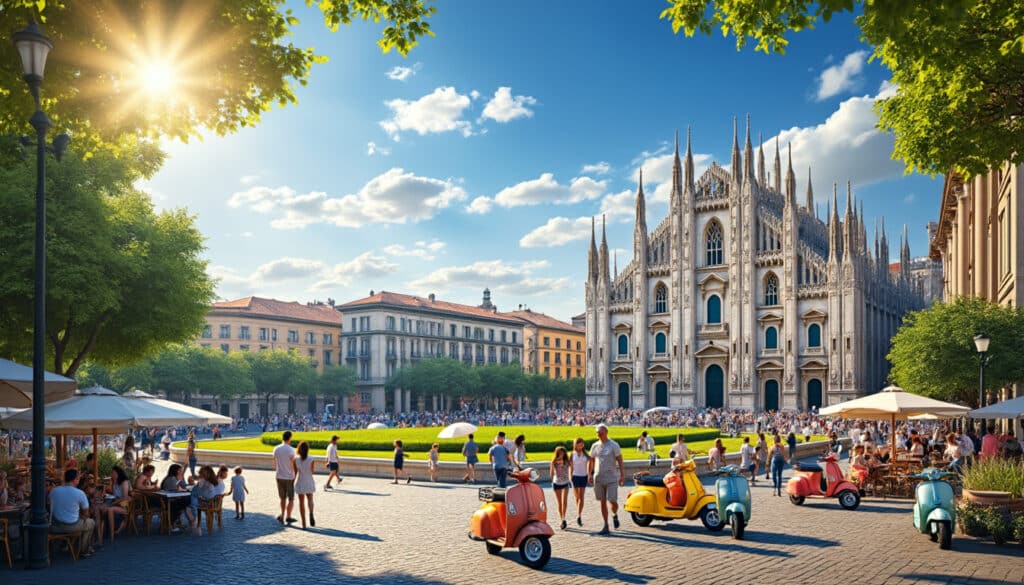
Welcome to the bustling metropolis of Milan, where the climate is as dynamic and vibrant as the city itself. Milan, the fashion capital of the world, offers a unique blend of climatic conditions that artfully complement its rich history, cultural…
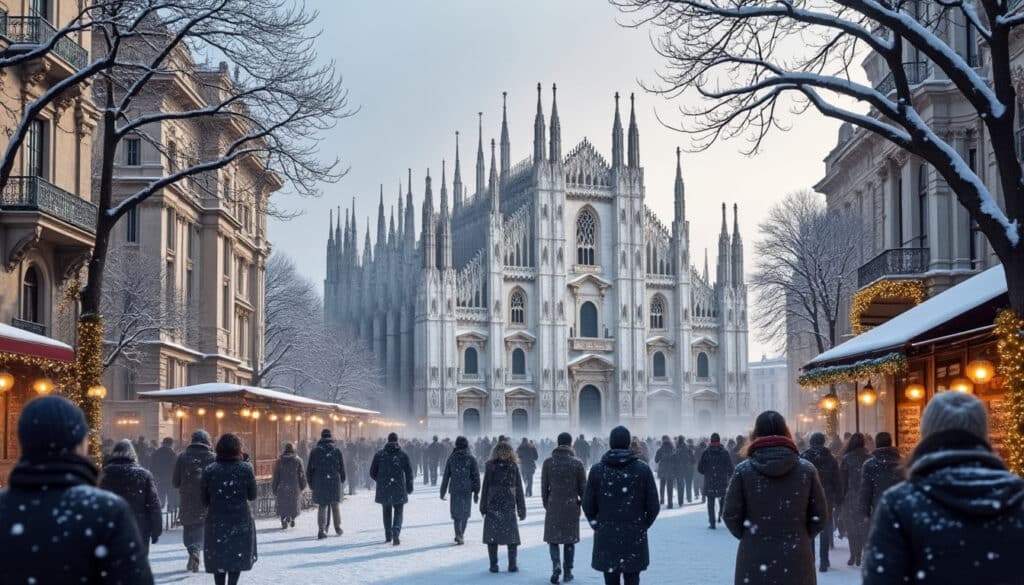
Despite its reputation as a fashion capital, Milan is not just about high-end boutiques and catwalks. It’s a city where the weather plays a significant role, especially during the cold months. The climate in Milan can be a fascinating subject,…

Flooding and natural risks in Milan
The fascinating and historic city of Milan, renowned for its stunning architecture, fashion-forward culture, and bustling lifestyle, also faces some significant natural challenges. Among these, flooding and other natural risks pose substantial threats to both the city and its inhabitants.…

As the warm summer rays drench the streets of Milan, locals and tourists alike prepare to navigate the challenges and delights that come with the hot weather. With temperatures soaring, fashion considerations take on new dimensions, adjusting not only one’s…

Rain and precipitation in Milan
Milan, known for its exquisite fashion scene and historic architecture, experiences its own unique weather patterns that reflect the subtropical climates. Rain and precipitation in Milan create a captivating backdrop to this vibrant city, not only shaping the landscape and…

Milan, with its iconic fashion scene and architectural grandeur, experiences a diverse array of seasons, each offering its unique charm and challenges. Known for brands like Armani, Dolce & Gabbana, and Prada, the city doesn’t just set trends in fashion…
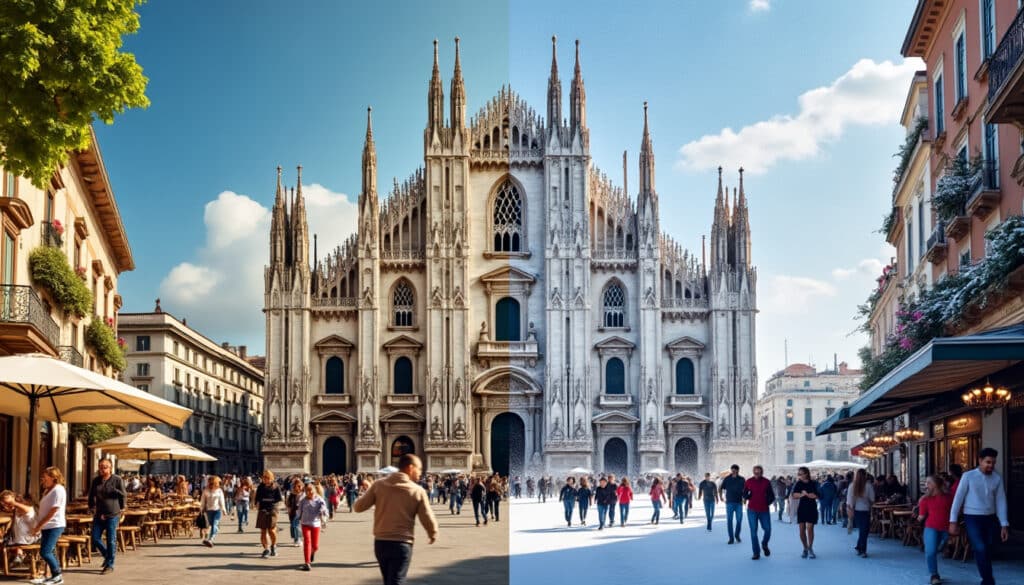
From the bustling streets of Corso Buenos Aires to the historic grandeur of the Duomo di Milano, the city of Milan is a tapestry of culture, history, and modernity. Yet, beneath its architectural brilliance and fashion-forward image, there’s an ever-changing…
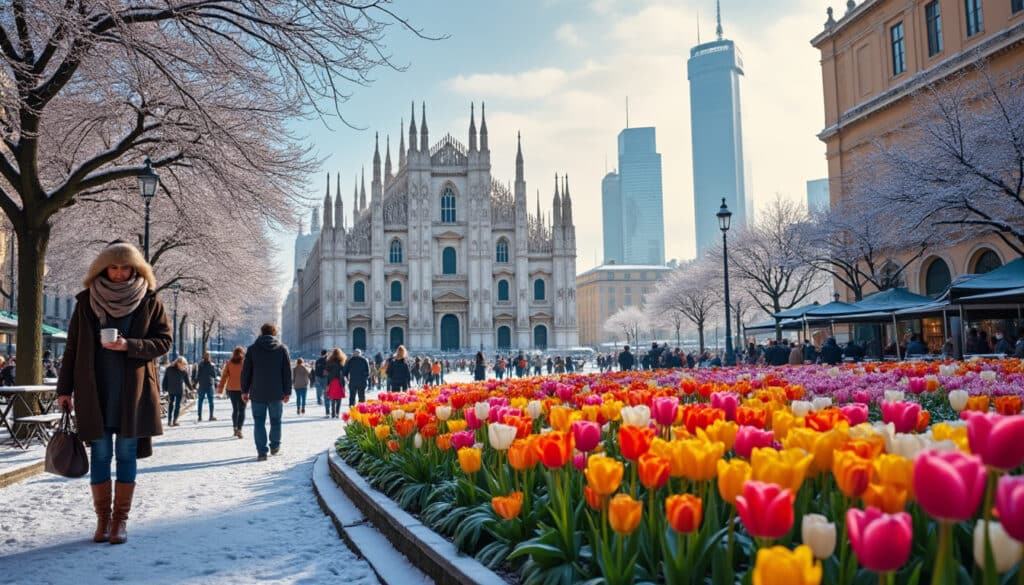
Exploring Milan month by month offers a fascinating journey through its dynamic climates and seasonal transitions. Whether you’re sauntering along its cobbled streets during a balmy summer or admiring its historic architecture under winter’s grayish canopy, Milan’s weather paints the…

What is the weather like in Milan?
When exploring the fashionable streets of Milan, understanding the weather is crucial for planning a trip or daily activities. Milan, known for its exquisite fashion scene, stunning architecture, and vibrant culture, experiences a varied climate throughout the year. From the…



